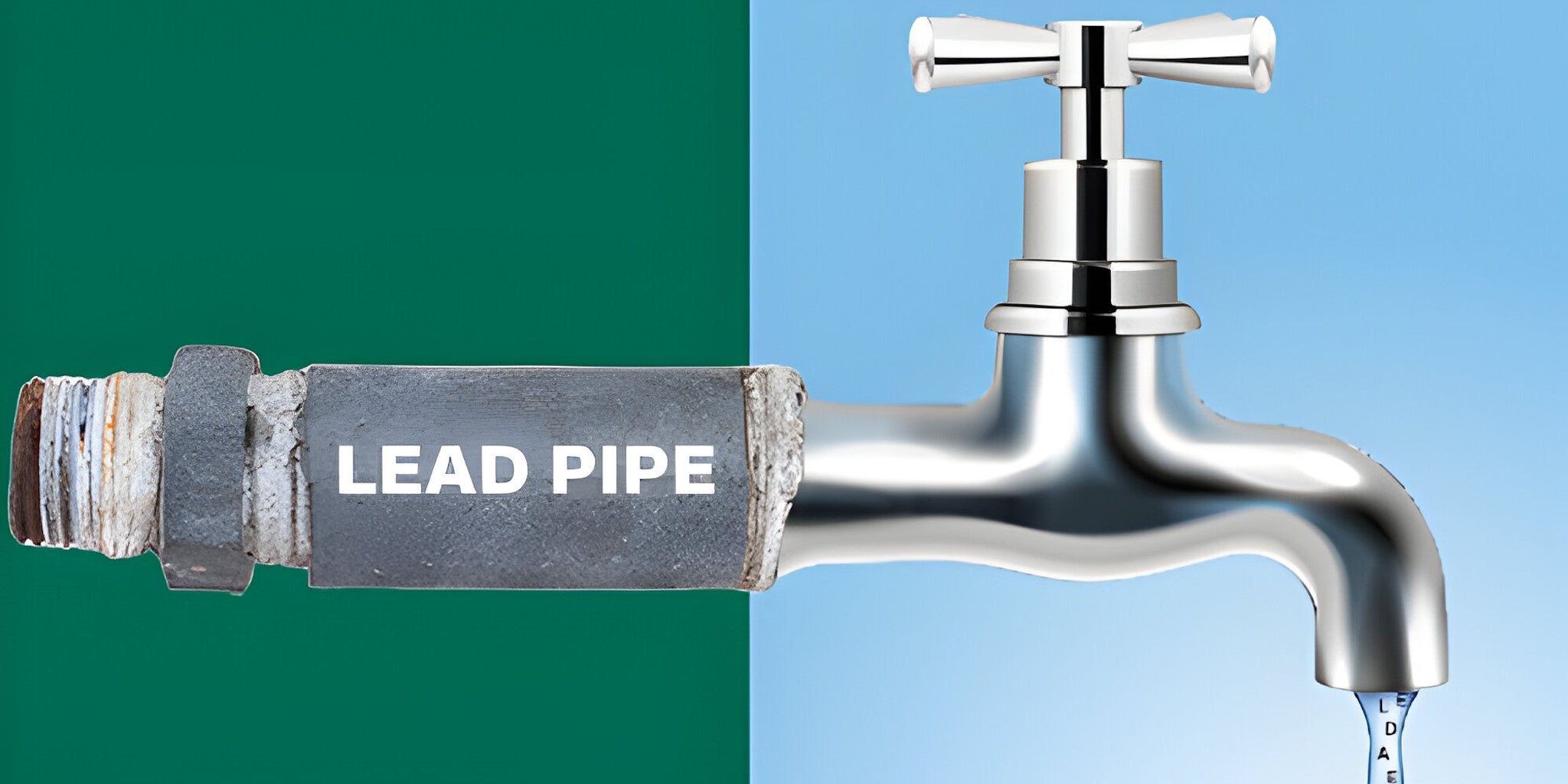The problem of lead content in drinking water stems mainly from human activities. Despite the long-standing knowledge about the detrimental health effects of lead for more than two thousand years, the extensive use of lead in water distribution and plumbing systems continued until relatively recent times, only a few decades ago. According to the Chartered Institute of Water and Environmental Management, Lead pipes are, without a doubt, the most prevalent origin of lead in drinking water. Current estimates suggest that there are around 6.1 to 10.2 million lead service pipes in the United States, which could potentially pose a significant health risk. Similarly, in the United Kingdom, approximately 40% of UK homes (~17 million people) are still supplied by lead pipes1. The presence of lead in tap water uk is primarily due to homeowners' responsibility for the pipes from their property boundary, which may contain lead pipes, solder, or fittings. Water utilities are responsible for the pipes from the treatment works to the property boundary. Without proper treatment, water's corrosive effects on household plumbing systems can result in lead contamination in tap water2.
In this blog, we will delve into the detrimental effects of lead contamination in drinking water and provide guidance on the safe levels of lead in drinking water. Understanding these crucial aspects will empower you to make informed decisions about your drinking water. Let us explore the impact of lead in our water supply and take the necessary steps to safeguard our health.
Dangers of lead in drinking water
Lead, a potent neurotoxin, poses serious health risks even at low exposure levels3. Reports from Southern Water and other water companies indicate that lead in drinking water can jeopardise our well-being, particularly for pregnant women, unborn babies, and young children. As a result, the World Health Organisation acknowledges lead as one of the ten most perilous chemicals with significant implications for public health4. It has also been emphasised as one of the most hazardous environmental toxins5, despite several countries successfully reducing lead exposure through product regulations.
Why is lead dangerous in drinking water?
The impact of lead exposure on health relies on both the total accumulated dose of lead and the susceptibility of the individual, rather than the environmental sources like food, water, or air in which lead is present6. According to the World Health Organisation, young children are particularly at risk when it comes to the detrimental effect of lead in drinking water. This exposure can result in enduring and serious health problems, especially affecting the development of their brains and nervous systems. Additionally, the symptoms of lead in drinking water can also inflict lasting damage on adults, increasing the risk of high blood pressure and kidney problems. Pregnant women exposed to elevated lead levels face significant risks, such as miscarriage, stillbirth, premature birth, and low birth weight. Given the toxic effects of lead, it is crucial to prioritise the maintenance of the concentration of lead in drinking water to protect our health and ensure our safety.
How to test for lead in drinking water
As per the Drinking Water Inspectorate (dwi.gov.uk), in case you suspect the presence of lead pipes in your home, you have the option to request your water company to conduct a water test at your kitchen tap. Upon investigation, if the water company confirms the presence of lead pipes or identifies another source of lead in the plumbing system, they are obliged to furnish you with written guidance on the necessary actions to take.
Moreover, the utilisation of point-of-use water treatment devices for filtering tap drinking water has become widely accepted and popular. This trend is primarily driven by concerns about lead contamination arising from service lines and interior plumbing materials within premises. An effective way to ensure you are drinking clean water is by filtering it. While you can purchase bottled water that a company has already filtered, you can also filter water yourself. Doulton Water Filters offers consumers the opportunity to have filtered water that is treated by going through a water filtration system. There are many types of systems and ways to filter water, but they all essentially work to remove contaminants from water in your home.
References
1. Lamb, N. (2020). Taking the lead: an insight into orthophosphoric acid treatment for lead control in the UK drinking water industry. Perspectives in Public Health, 140(3), 133-134.WHO. (2019). Lead poisoning and health.
2. Lamb, N. (2020). Taking the lead: an insight into orthophosphoric acid treatment for lead control in the UK drinking water industry. Perspectives in Public Health, 140(3), 133-134.WHO. (2019). Lead poisoning and health.
3. Bosscher, V., Lytle, D. A., Schock, M. R., Porter, A., & Del Toral, M. (2019). POU water filters effectively reduce lead in drinking water: a demonstration field study in flint, Michigan. Journal of Environmental Science and Health, Part A, 54(5), 484-493.
4. Del Olmo, G., Ahmad, A., Jensen, H., Karunakaran, E., Rosales, E., Calero Preciado, C., ... & Douterelo, I. (2020). Influence of phosphate dosing on biofilms development on lead in chlorinated drinking water bioreactors. npj Biofilms and Microbiomes, 6(1), 43.
5. Bosscher, V., Lytle, D. A., Schock, M. R., Porter, A., & Del Toral, M. (2019). POU water filters effectively reduce lead in drinking water: a demonstration field study in flint, Michigan. Journal of Environmental Science and Health, Part A, 54(5), 484-493.
6. Levallois, P., Barn, P., Valcke, M., Gauvin, D., & Kosatsky, T. (2018). Public health consequences of lead in drinking water. Current environmental health reports, 5, 255-262.






